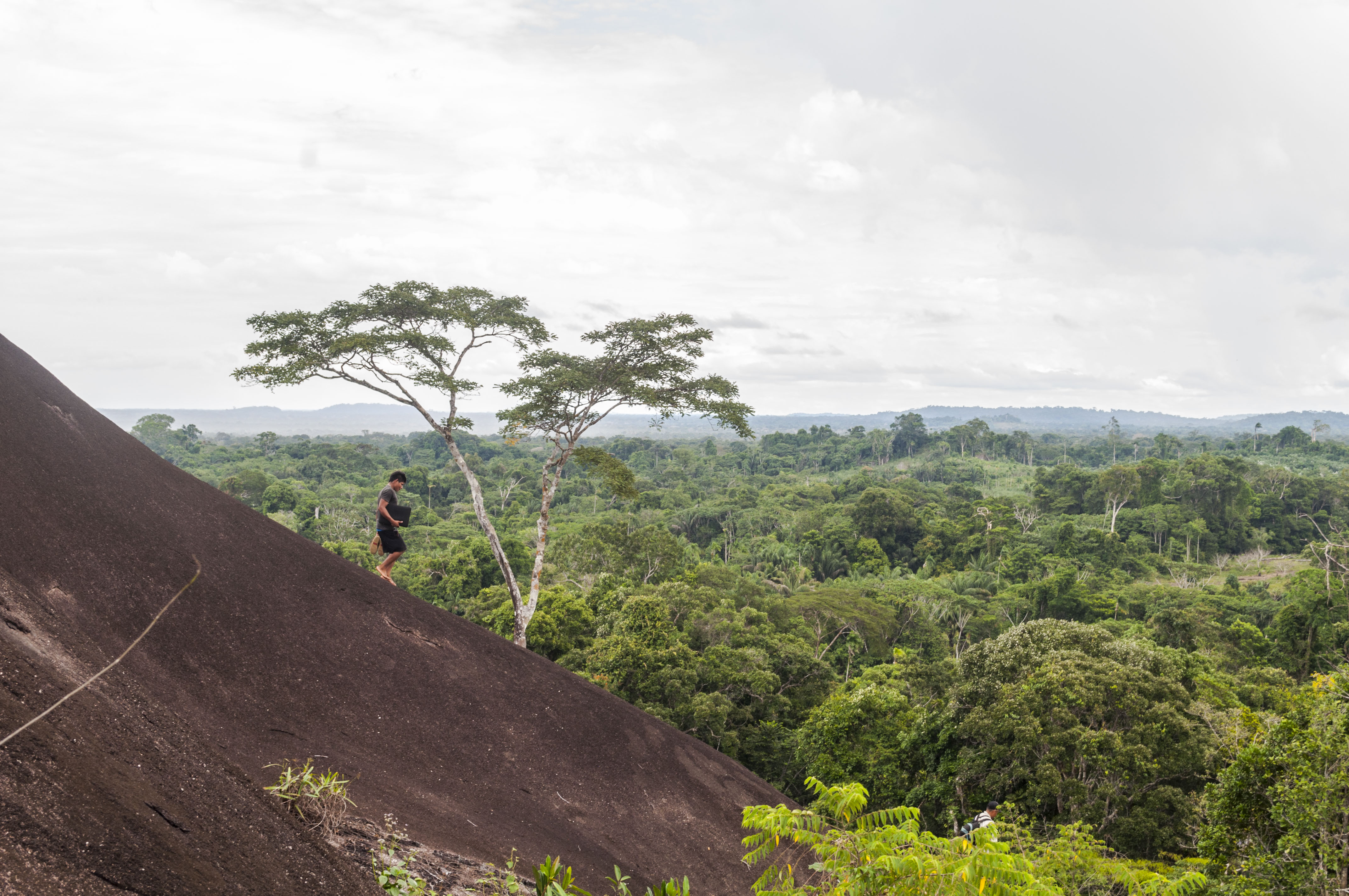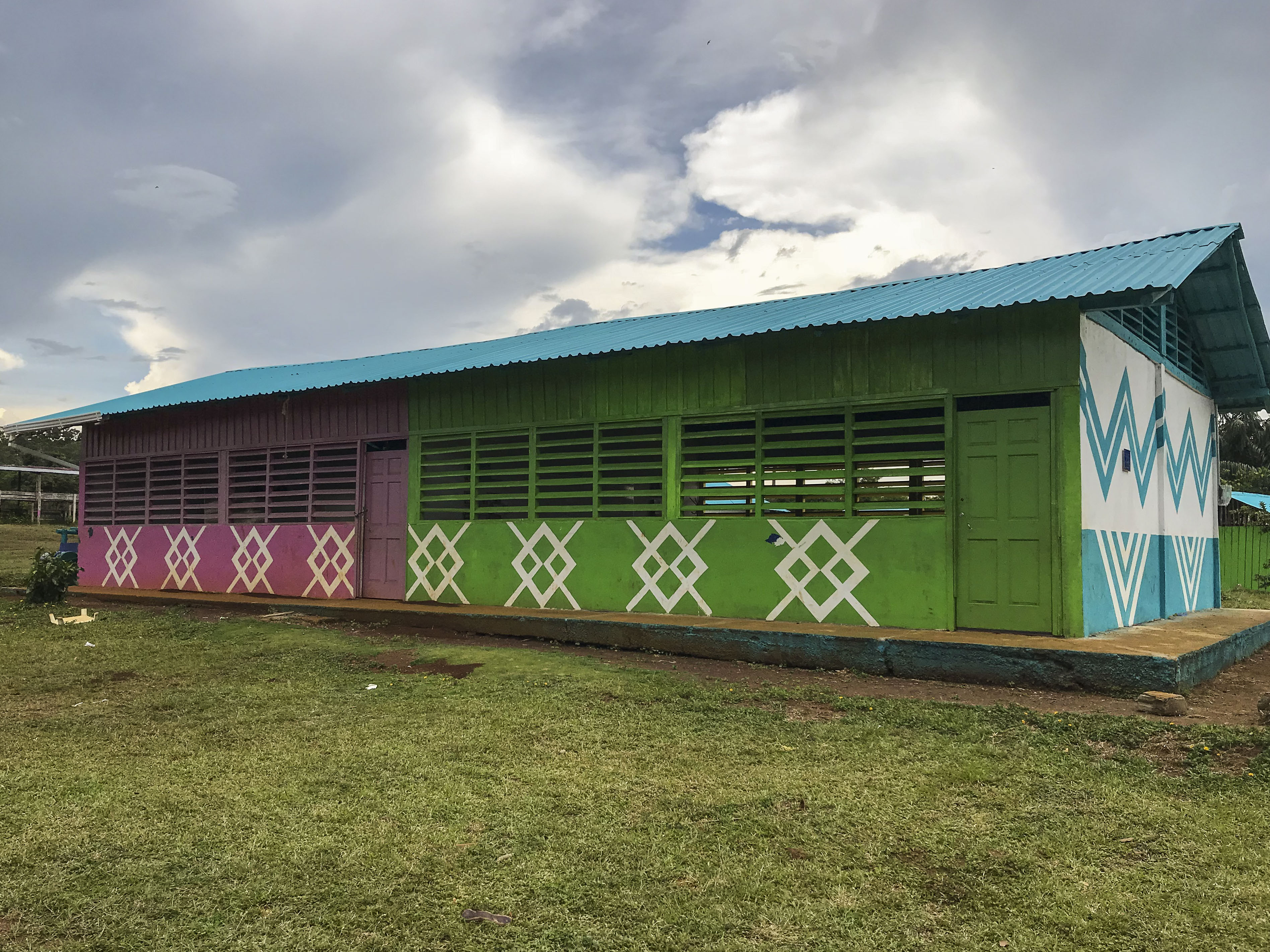Pami Miadava Joboro de la Asociación de Autoridades Tradicionales Indígenas Aledañas a Mitu (AATIAM), Colombia
History
Our Association of Traditional Indigenous Authorities Surrounding Mitú (AATIAM) is located in the Municipality of Mitú, department of Vaupés, in Colombia. It belongs to the Great Indigenous Reservation Eastern Part of the Vaupés and is made up of four communities: Mituseño Urania, Ceima Cachivera, San Roque de Tucunaré and Macaquiño. Three communities are located along the Vaupés River and the fourth, Ceima Cachivera, in the Caño Ceima, a tributary of the Vaupés River. The territory, currently occupied by the AATIAM communities, belongs to the Cubea ethnic group. This is how we have been named from the West, but the traditional term with which we recognize ourselves is ~ PAMIVA. The settlements are relatively recent as a consequence of various circumstances that made us move through the territory.
Self-government
It is the way and capacity that we have as indigenous communities so that our own traditional authorities govern us and to decide our internal affairs in accordance with our uses and customs. They are applied within the framework of indigenous law, special jurisdiction and international law. Our Life Plan, which we attach to this case study, presents the history of the formation of our Association of Traditional Indigenous Authorities (AATI), as well as the governance structure. AATIs are public entities with a recognized right to govern autonomously. Each community has a governing board with its highest authority headed by the captain, and includes representation of women, youth and seniors. These leaders are appointed by the communities and work to find solutions to the basic needs of the communities in terms of economic, social, cultural, educational, sustainable development and food subsistence.
We consider that the indigenous Life Plan has always been there, even if it had not been written, and we have always planned our lives around it. We recognize that today it is necessary to improve and prepare children and young people to continue traveling with identity the path that we have outlined in the Plan. We hope that, already written, we will achieve greater unity, organization and autonomy, and that the Government will take us more into account.
Vision of the territory
We define the territory from three points of view:
1. Regarding the legal or the norms (rules / regulations): it refers to the recognition of collective property in the Great Reserve of the Vaupés Eastern Part, a territorial entity recognized by the State.
2. From the cultural, historical and ancestral appropriation: according to our origin and worldview, the territory is the space in which all living beings, visible and invisible interact, with whom we communicate, coexist and interact in the daily activities of our life.
3. By traditional territorial appropriation: in accordance with the territorial appropriation that each people has exercised, beyond Colombian national borders and prioritizing a kinship valuation that is expressed in marital alliances.

Our ancestral and traditional territory
Our territory has a rich supply of water sources: rivers, lagoons and the great Vaupés River, which give us water for consumption, fishing, bathing and transportation routes, as well as a great diversity of animals, plants and timber species, which we consider important for many different uses: food, medicine, construction, crafts, etc. Approximately 25% of the territory is made up of wetlands, 65% is monte bravo (primary forest), the rest is secondary forest and some sandy areas. Mount Bravo is a preserved forest where man has not intervened, with trees 45 and 50 meters high.
We have many sacred sites that we respect based on our traditional beliefs and knowledge. In the Life Plan you can consult the different sacred sites in the territory of each of the four communities. We have collectively identified the species of wild animals and fish that we find in our territory and that we use to supplement our diet. The traditional use of these species is for our food and for the exchange or sale to other communities so that we can acquire items such as rice, salt, soap, among others. We have carried out inventories to determine which species of flora and fauna are of importance to us, identifying which ones are abundant, scarce or extinct. This has helped us to reflect on the causes that have made species in danger to plan their proper management and recovery through conservation processes.
Threats and help
We have faced the pressure of colonization, evangelism and development for more than a century. We are aware that cultural loss has caused us to neglect our cultural practices for the management of the territory and the sustainable use of resources. Declare our Ticca and implement its zoning and management plan has several objectives, among them, strengthening our intention of cultural recovery and discouraging the entry of settlers to our territory, both to settle and to make an inappropriate use of resources.
We have requested the support of different friends and organizations to undertake processes of recovery and cultural empowerment. We are aware that we must continue to strengthen self-government within our community through training to improve internal organization and our relationship with the State and its institutions. We are part of the Ticca Colombia Network and we want to continue strengthening ourselves through exchange and networking with other Ticca in the Amazon, the country and the world.
More information
The Amazonia, un territorio de vida website showcases the efforts of Indigenous organizations in the Colombian Amazon working to strengthen territories of life, preserve ancestral knowledge, and ensure well-being for present and future generations.
To learn more about AATIAM, visit the following link: Aatiam – Territorio de Vida
This case study was originally published by UN Environment Programme World Conservation Monitoring Centre (UNEP-WCMC) in September 2021. The content was provided by the custodians of this ICCA. ICCA is self-declared and has gone through a peer review process to verify its status. More details on this process can be found here. The content of this website does not necessarily reflect the views or policies of the United Nations Environment Program or WCMC.
